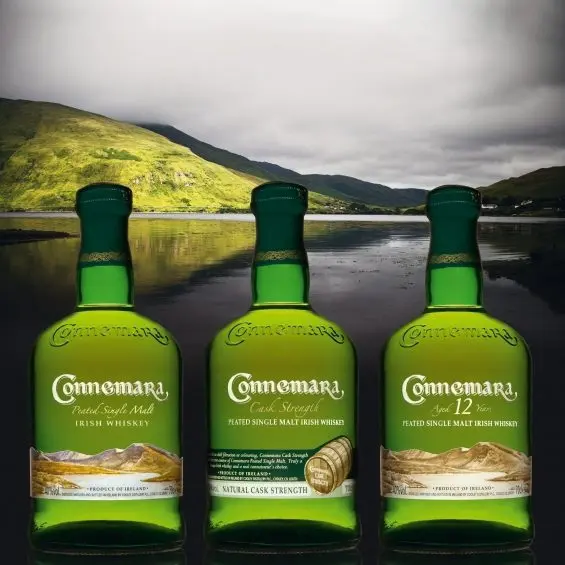Connemara is the name of a swampy mountainous region in the west of Ireland. Peat extracted from the swamps has always been used by local residents as a fuel, including for creating the right temperature when drying malt in distilleries. Whiskey Connemara was named after this region, which has preserved the tradition of producing a drink “with smoke”.
Historical reference. The Cooley distillery was built relatively recently – in 1987. The founder, Irishman John Teeling, is today the CEO of Cooley Distillery. The idea of creating a production facility that would use the old methods of distillation came to Teeling while studying at Cambridge. It was there, working on one of the projects, that he began to dream of reviving Irish whiskey and was so imbued with the problems that he decided to achieve success in practice.
Irish and Scotch whiskey have always competed, but until the beginning of the last century, the Irish drink was much more popular in the world than scotch. But then conflicts with Britain became more frequent in Ireland, Prohibition broke out in the USA, which led to a decrease in production levels, the Scots began to produce more blends and slowly oust Irish producers from the market. In the 60s of the last century, there were only 4 working Irish distilleries. In the 70s, the number was halved due to the creation of Irish Distillers, which included Powers Cork and the famous Jameson. And in 1972, only Bushmills remained, monopolizing the market.
Monopoly is not conducive to development, the emergence of competitor Cooley Distillery has created the missing competition and the necessary conditions. The distillery on the small peninsula of Cooley is the only new distillery built in Ireland in the last hundred years. Then John Teeling bought several old brands, the Old Kilbeggan distillery closed at the beginning of the century, and began to gradually restore the positions lost by Irish whiskey. And after the transition of Bushmills, to the transnational Diageo headquartered in England, and Irish Distillers – to the ownership of Pernod Ricard with an office in France, the Cooley distillery remained the only enterprise with Irish capital.
Cooley Distillers is extremely proud of its authenticity, as well as the fact that it has restored the former glory of the Tyrconnell and Kilbeggan brands. But it continues to develop, offering fans new Irish single molts, one of which is Connemara.
Features of whiskey “Connemara”
- Unlike most Irish whiskeys, the malt for Connemara is dried in a Scotch way – over burning peat on special grates, so the drink has a smoky flavor.
- Alcohols are obtained by double distillation in copper stills and aged in American white oak barrels for three years or more.
- Drink Connemara only clean, if you want to soften the taste, add ice.
- “Connemara” goes well with smoked salmon, cheddar, blue cheeses.
Types of whiskey Connemara
- Connemara Peated Single Malt (40%). Light golden whiskey with aromas of smoke and heather, with pronounced notes of honey. The taste is soft, harmonious, with hints of honey, vanilla and chocolate. Long warm aftertaste with a smoky aftertaste. The drink was awarded a gold medal at the IWSC four times – in 2008, 2009, 20010, 2011, was named the best Irish single malt whiskey in 2009 at the World of Whiskeys Awards, and received gold in 2011 at the Spirits Competition in San Francisco.
- Connemara Peated Single Malt, 12 years (40%). A bright golden drink with a smoky aroma, in which you can hear notes of vanilla, almonds and cinnamon. The taste is slightly smoky, with hints of dried fruit and a warming aftertaste.
- Connemara Single Cask (46%). A honey-colored drink with ten years of aging and a slightly sharp smoky aroma, in which notes of chocolate, vanilla and honey are heard. The taste is soft, fruity-smoky, with vanilla and creamy undertones and a long smoky aftertaste.
- Connemara Turf Mor (58,2%). The strongest whiskey “Connemara”, released in a limited edition. The color is bright, amber-gold. The aroma is complex, slightly smoky, with notes of dried cherries, nuts, lavender and chocolate. The taste is harmonious, soft, with hints of vanilla, caramel and orange peel. Warming smoky aftertaste. In 2011, he received gold in a competition at the IWSC competition.










